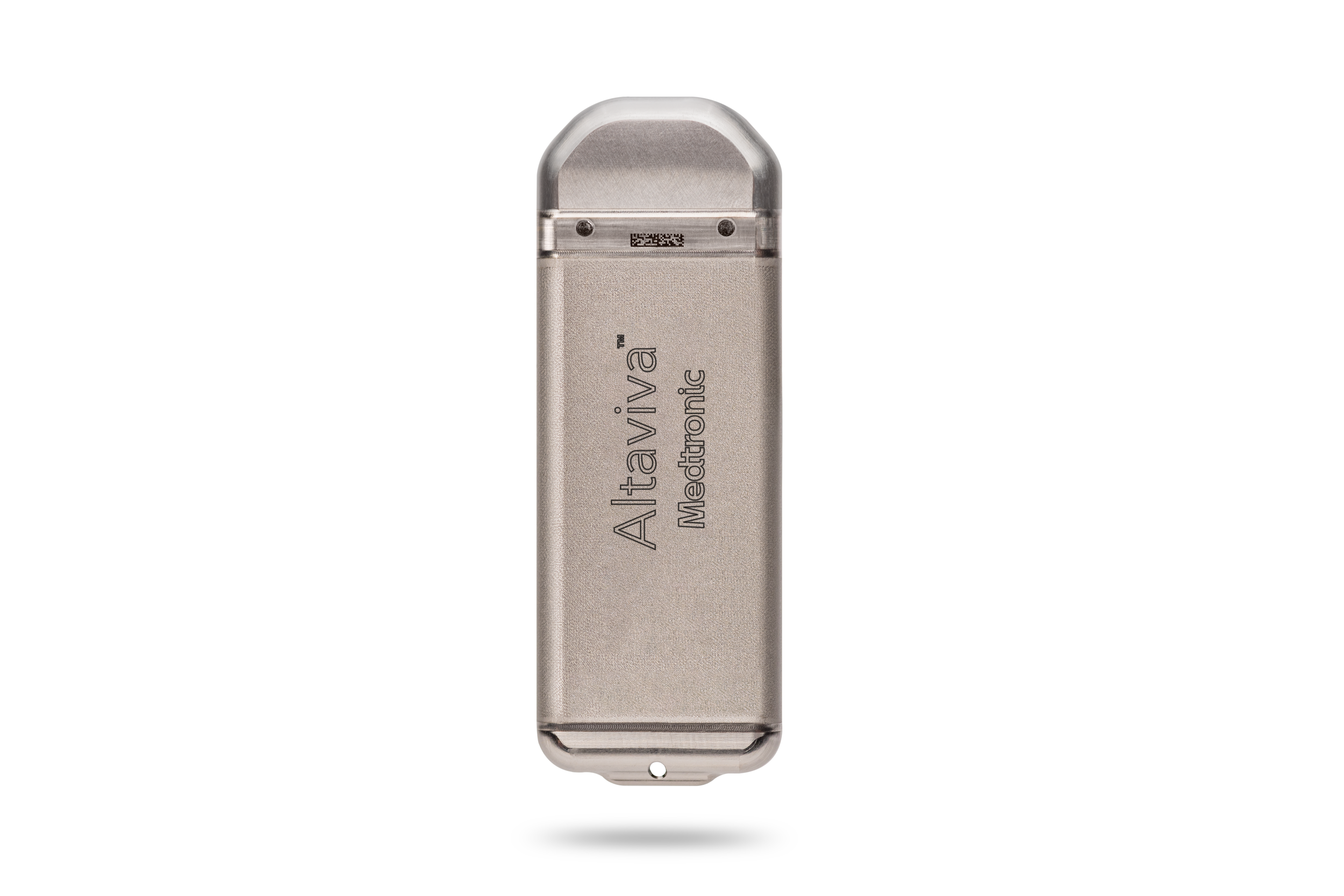Simple, minimally invasive treatment for bladder leaks
The Medtronic Altaviva™ implant is a small device placed under the skin near the ankle to gently stimulate the tibial nerve—a key pathway that helps the bladder and brain “talk” to each other. It’s designed to reduce sudden urges and leaks from overactive bladder (OAB). The device just received FDA approval for treating urge urinary incontinence (UUI). It is placed using just local anesthetic.
A simple, minimally invasive treatment for bladder leaks (urge urinary incontinence)
Now offered by Bladder Boutique, the Altaviva™ implant is a small device placed under the skin near the ankle to gently stimulate the tibial nerve—a key pathway that helps the bladder and brain “talk” to each other. It’s designed to reduce sudden urges and leaks from overactive bladder (OAB). The device just received FDA approval for treating urge urinary incontinence (UUI).
Why patients are interested:
Minimally invasive procedure near the ankle; the approach doesn’t require sedation or imaging.
Therapy is active when you go home (no waiting period to start stimulation).
Long-lasting power: designed 15-year battery life under typical settings; brief ~30 minute recharge once or twice per year at home or in the clinic.
Able to undergo any imaging including MRIs, CT Scans and X Rays.
Is Altaviva right for me?
You may be a candidate if you:
Have urgency and leaks (UUI) despite trying lifestyle changes and/or medications.
Want a minimally invasive option that is not a daily therapy.
Prefer a treatment done in a single phase with just local anesthesia that is automatic .
How the therapy works:
Gentle stimulation is automatically delivered to the tibial nerve just above your ankle. That nerve connects into the network that influences bladder activity. By modulating these signals, the therapy reduces urgency and leakage episodes in patients.
Answers to common questions about Altaviva
-
The stimulation is very gentle and often fades over time
Settings can be adjusted to assure comfortable stimulation.
-
It last ~15 years.
Recharging is occasional and brief (up to ~30 minute sessions once or twice per year done at home or in the clinic)
-
Yes. You can undergo all imaging including MRIs, CTs and X-rays.
-
Coverage policies continue to update for this novel therapy. Our team will verify benefits and obtain any required prior authorization before scheduling the procedure. The procedure code is 0816T. It is covered by Medicare and many commercial plans.
How this compares to other options
Lifestyle & pelvic-floor Physical Therapy – first-line for many patients.
Medications – sometimes help but may have intolerable side effects such as dry mouth/constipation, cognitive risk and/or not affordable .
Office-based percutaneous tibial stimulation (PTNM) – weekly 30 minute sessions where a small needle is placed in the tibial nerve at the lower leg. The needle is stimulated externally. Although effective, the therapy requires recurring clinic visits making compliance tough and just weekly or monthly stimulation might not achieve enough efficacy.
botulinum toxin type – injections into the bladder muscle that need to be repeated every ~6 months.
Sacral neuromodulation – a pacemeker is placed in the upper buttock area; effective for many but requires 2 phases of procedures and sedative and/or general anesthesia.
Tibial implant device comparison - Altaviva is superior in many ways to legacy ITNS stimulators like Valencia Technologies eCoin and Bluewind’s Revi devices.
Patient Guide - Which treatment is right for me?
Altaviva gives another option: a lower leg implant that is activated immediately, with a 15-year battery life and automatic stimulation that can be customized to optimize results.
What to expect
Before
Office visit to confirm candidacy and review your medical history.
We will discuss treatment options and how to proceed.
During the Altaviva implant
A brief procedure at the lower leg using just local anesthesia
No sedation or imaging is required for this technique.
After
You leave with the therapy already on, so there’s no gap before treatment begins.
Most daily activities resume immediately.
Vigorous activity such as running and biking should be avoided for 4-weeks.
All imaging may be obtained such as MRIs, CTs and X-Rays.
The device last ~15 years with brief recharging (~30 minute sessions once or twice per year) in the clinic or at home.



